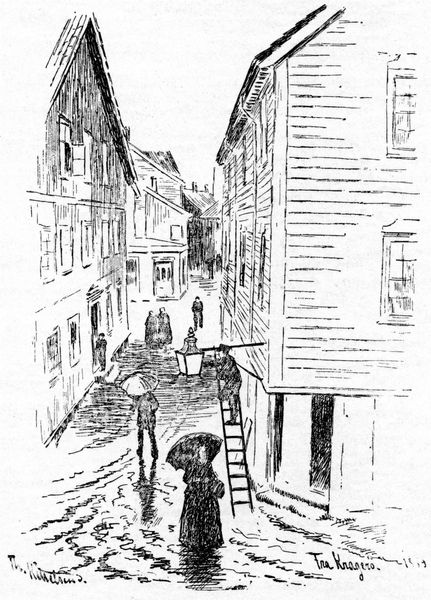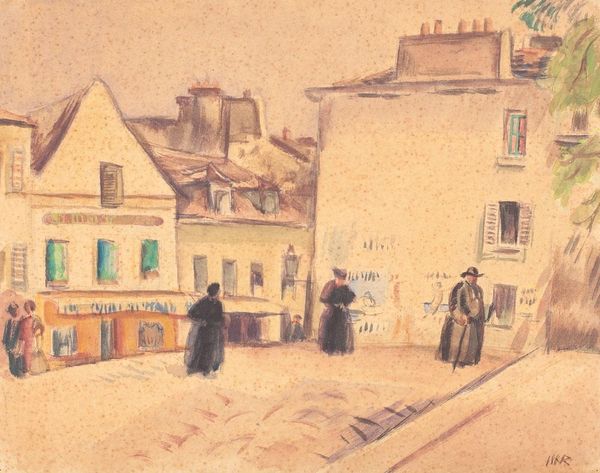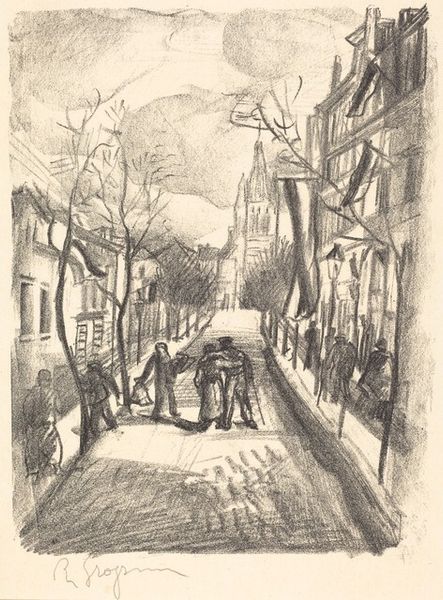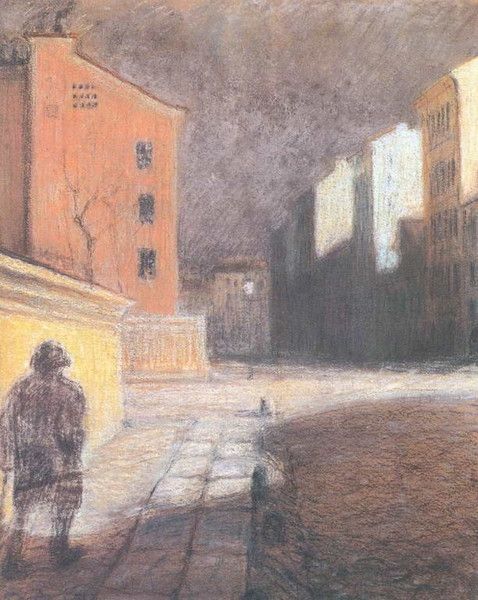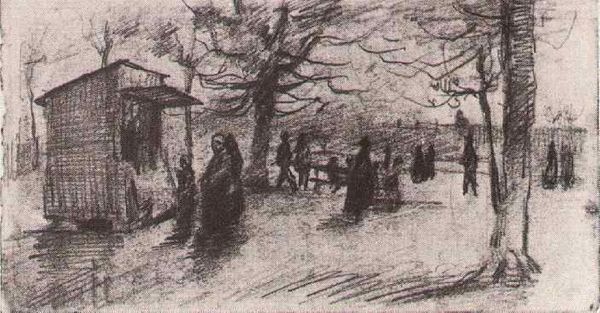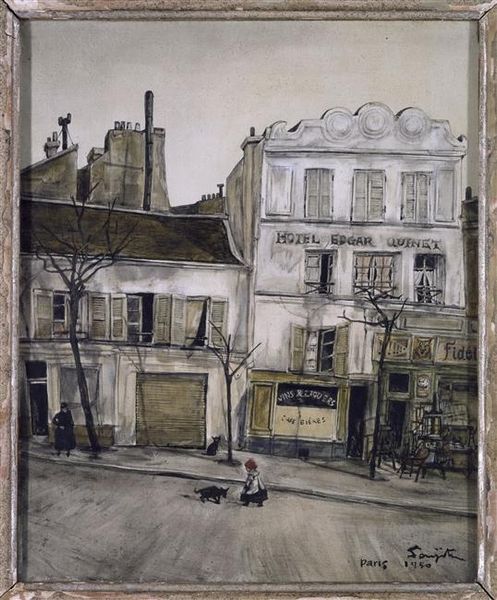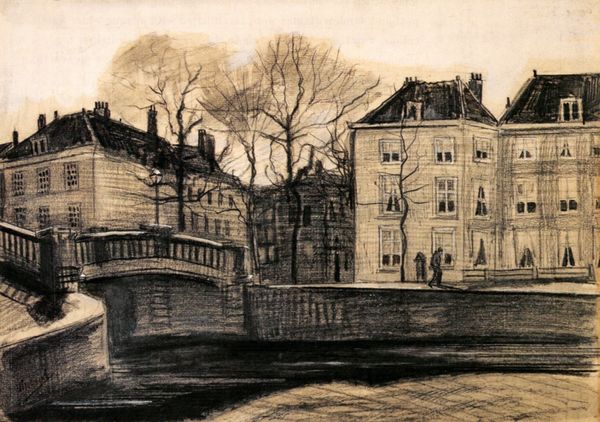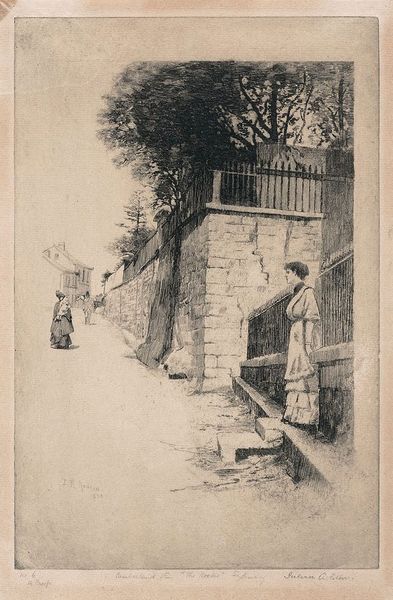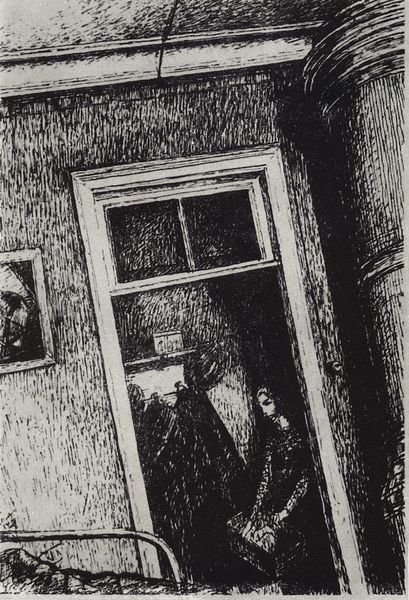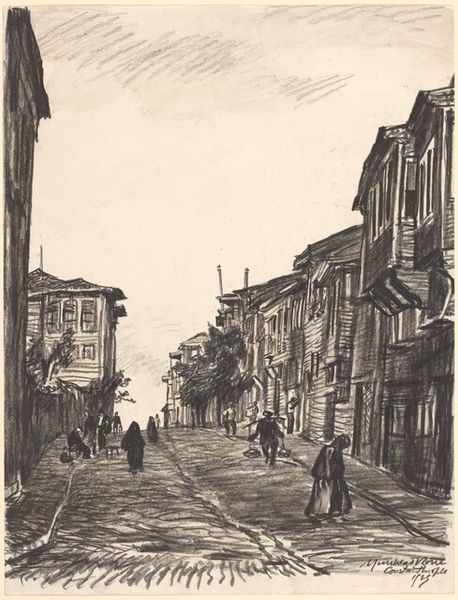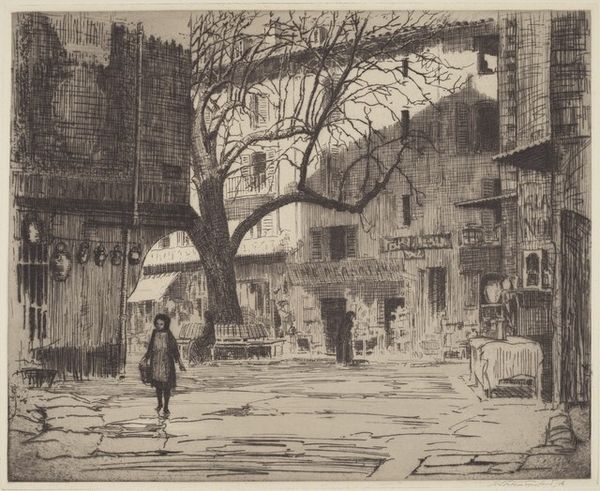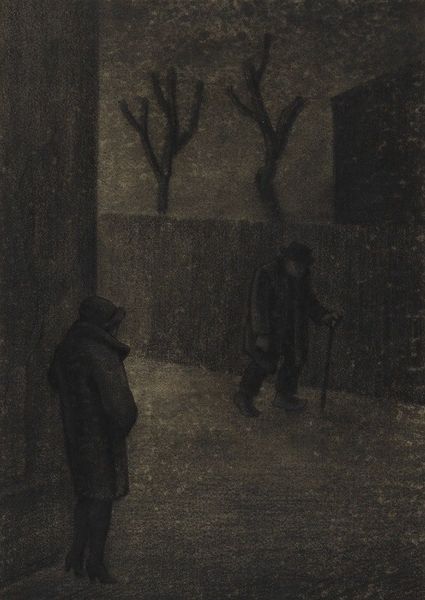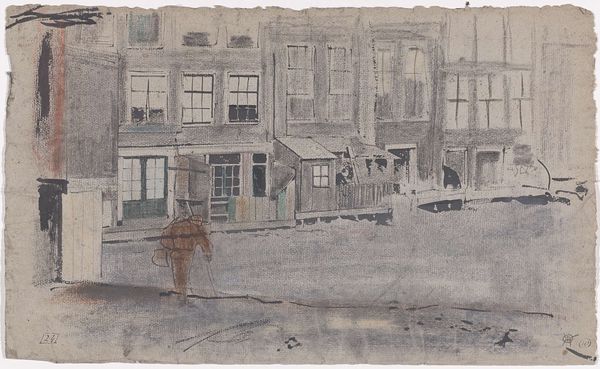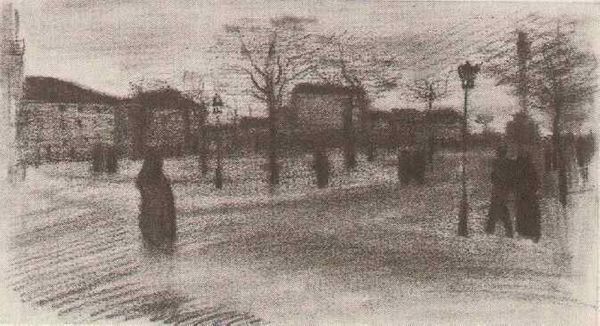
#
tree
#
landscape illustration sketch
#
amateur sketch
#
mechanical pen drawing
#
pen sketch
#
pencil sketch
#
incomplete sketchy
#
pen-ink sketch
#
square
#
pen work
#
street
#
fantasy sketch
#
initial sketch
Copyright: Public domain
Curator: This is Vincent van Gogh's "Old Street The Paddemoes," created in 1882. It's a pen and ink drawing, currently residing at the Kröller-Müller Museum. What are your first impressions? Editor: Bleak. It feels intensely bleak. The sketchiness of the lines, the dark tones... it evokes a real sense of isolation, almost a haunting quality, don't you think? Curator: Absolutely. The image embodies the hardships of the working class in The Hague at the time. Van Gogh was deeply invested in representing their reality. The materiality, specifically the inexpensive pen and ink on paper, speaks to the economic constraints both he and his subjects were under. Editor: And consider the institution displaying this work now. How has the perception of the common subject changed, elevated, by its display within the museum context? Van Gogh aimed to give these people a voice, and now that voice echoes through gallery walls. The politics of representation are central here. Curator: Precisely. Think about his choices here - the swift, almost frenzied strokes that make up the architecture, and especially the figures walking down the road. This piece precedes his adoption of vibrant colour, the quick and cheap production means speak to this reality. We can see how Van Gogh attempts to communicate with basic materials the struggles around him. Editor: Also, how has Van Gogh's reputation shaped how we see this sketch? Had it been anyone else, might we have simply dismissed it as a preparatory exercise, rather than viewing it as a powerful piece of social commentary displayed in the prestigious walls of the Kroller-Muller? Curator: The institutional frame indeed. Ultimately it’s interesting to think about how the labor, in this case Van Gogh's rendering and inking, combined with a social consciousness produces the cultural artifact we are looking at here. Editor: This piece encourages us to question who has the power to shape artistic taste, which artistic subjects find space, and who's narrative, as represented in museums like this, gains cultural prominence. Curator: Absolutely. There's something raw and honest in this early work, and it raises fascinating questions about art, labor, and the portrayal of poverty. Editor: Indeed. A poignant and complex snapshot of a moment in history and of art world accessibility.
Comments
No comments
Be the first to comment and join the conversation on the ultimate creative platform.
